
Image courtesy of Nantipa - A Tico Beach Experience
Costa Rica is a playground of diverse landscapes and rich biodiversity, offering endless options for adventure and relaxation. From its lush rainforests and misty cloud forests to its stunning beaches and majestic volcanoes, this vibrant country has something for every type of traveler. In this guide, we explore the top things to do in Costa Rica to help you make the most of your trip — all recommended by Fora travel advisors who recently enjoyed a scouting trip to the tropical paradise.
For professional assistance planning your own unforgettable Costa Rica vacation, book your trip with a Fora Advisor. They’ll lay out all your options — from exploring the eerie-yet-beautiful Monteverde Cloud Forest to lounging on the beaches of the Papagayo Peninsula — and help you find accommodations that match your travel style and budget. Simply connect with a Fora Advisor to get started.
The best things to do in Costa Rica, as experienced by Fora Advisors on a recent FAM trip
Fora regularly plans familiarization trips (FAM trips) to destinations around the world. These trips give Fora Advisors the opportunity to learn about and build relationships with travel partners on the ground, and better serve their clients with meaningful experiences as a result.
This time, a team of Fora Advisors visited many of the best places to stay in Costa Rica to immerse themselves in the local setting and culture. They witnessed numerous regions and learned about all the best things to do and where to stay. Below, we’ve built a sample itinerary based on their experience to give you an idea of what an amazing Costa Rica vacation can look like.
(P.S. If FAM trips and selling travel sounds exciting to you, apply to become a Fora Advisor.)
Related article: Definitive Guide: Costa Rica
Day 1: fly into San José
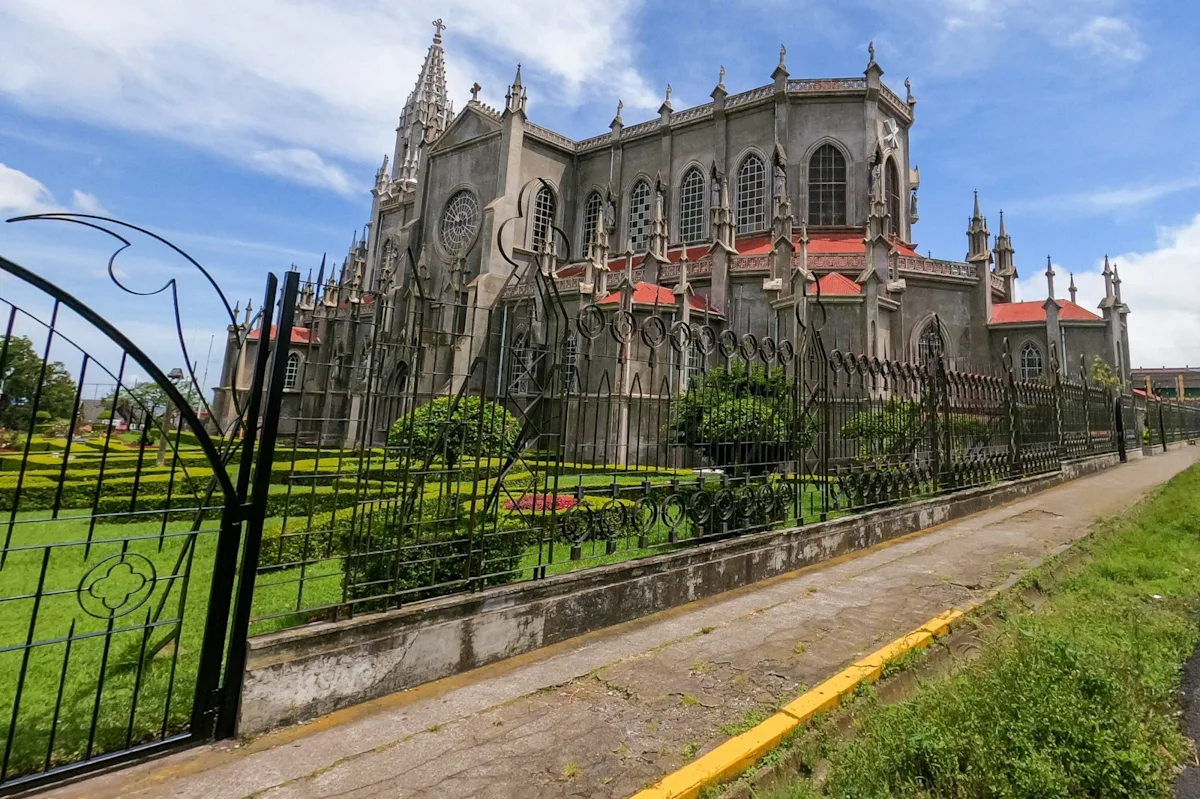
Many travelers either fly into Juan Santamaría International Airport (SJO), near San José, Costa Rica’s capital, or Daniel Oduber Quirós International Airport (LIR), in Liberia. The latter is excellent if you’re only interested in visiting destinations in the province of Guanacaste (we’ll come back to this), but if you want to explore a unique side of the country before delving into its rainforests and beaches, choose the former.
San José is Costa Rica’s most urban and modern city. Beyond serving as the country’s capital, it’s a cultural hub filled with interesting attractions and (arguably) Costa Rica’s best nightlife. San José is also a convenient starting point for exploring the rest of the country’s natural wonders (which was what our team of Fora Advisors did). Exploring the city’s highlights only takes a day or so, too — but you can certainly stay longer; there’s plenty to do.
Tour San José’s streets, markets & museums
San José’s busy streets are filled with lively vendors, colorful murals and historic buildings, each telling a story of the country's heritage. A visit to the Central Market, one of the city's most iconic spots, allows you to dive into local life, sampling fresh produce, traditional Costa Rican dishes and handmade goods. There are also world-class museums, such as the Gold Museum and the National Museum, where you can explore artifacts, art collections and exhibits on the country’s history, both from before and after Spanish colonization.
Visit the National Theater
Costa Rica’s National Theater is a standout location. The site is a must-visit for its architectural beauty and cultural significance. Built in 1897, the neoclassical gem is one of the most beautiful buildings in Costa Rica. Beyond its visual appeal — marble staircases, gilded ceilings, intricate murals — the theater hosts a variety of operas, plays and concerts by both local and international performers. Additionally, guided tours provide historical insights into its construction and legacy.
Connect with a Fora Advisor for more itinerary ideas in San José, Costa Rica.
Days 2 & 3: La Fortuna & Arenal
La Fortuna and Arenal made up the bulk of our FAM trip team’s early days in Costa Rica. The two are among Costa Rica's most iconic destinations. La Fortuna, a charming town at the base of Arenal Volcano, serves as the gateway to exploring the surrounding region's wonders. The volcano, once highly active, now provides a dramatic backdrop for hikes and sightseeing. Visitors can also enjoy natural hot springs, ziplining and a refreshing swim at the La Fortuna Waterfall — one of the most unique things to do in Costa Rica’s Arenal region.
Related guides: Costa Rica: La Fortuna and Guanacaste & Inland to Coast: Arenal Volcano to the Guancaste, Costa Rica
Visit the Hanging Bridges

Image courtesy of Nayara Tented Camp
Many Fora Advisors recommended visiting the Místico Arenal Hanging Bridges, which offer a unique way to experience the lush rainforest canopy. Walk across a two-mile stretch of suspended bridges for panoramic views of the Arenal Volcano and surrounding wildlife.
Fora Advisor Kimberly Sessions recommended traveling with a certified nature guide — an advisor can set this up — who can educate you on the local flora and fauna (sloths, snakes, monkeys and more). Kimberly also suggested packing a poncho, and noted that this an excellent adventure for kids of all ages.
Trek to La Fortuna Waterfall
La Fortuna Waterfall is one of Costa Rica’s most famous landmarks. Cascading from a height of about 230 feet, the waterfall plunges into a crystal-clear pool surrounded by rainforest. Enjoy a scenic hike down a steep set of stairs to the base of the falls, where you can swim in the refreshing water or take in the dramatic beauty of the falls and the surrounding wildlife.
“Wear sturdy shoes with good grip, as the hike to La Fortuna Waterfall involves steep steps and can get slippery, especially after rain,” Fora Advisor Laura Zapata said. “Don't forget a swimsuit for a dip at the base!”
Where our advisors stayed: Tabacon Resort
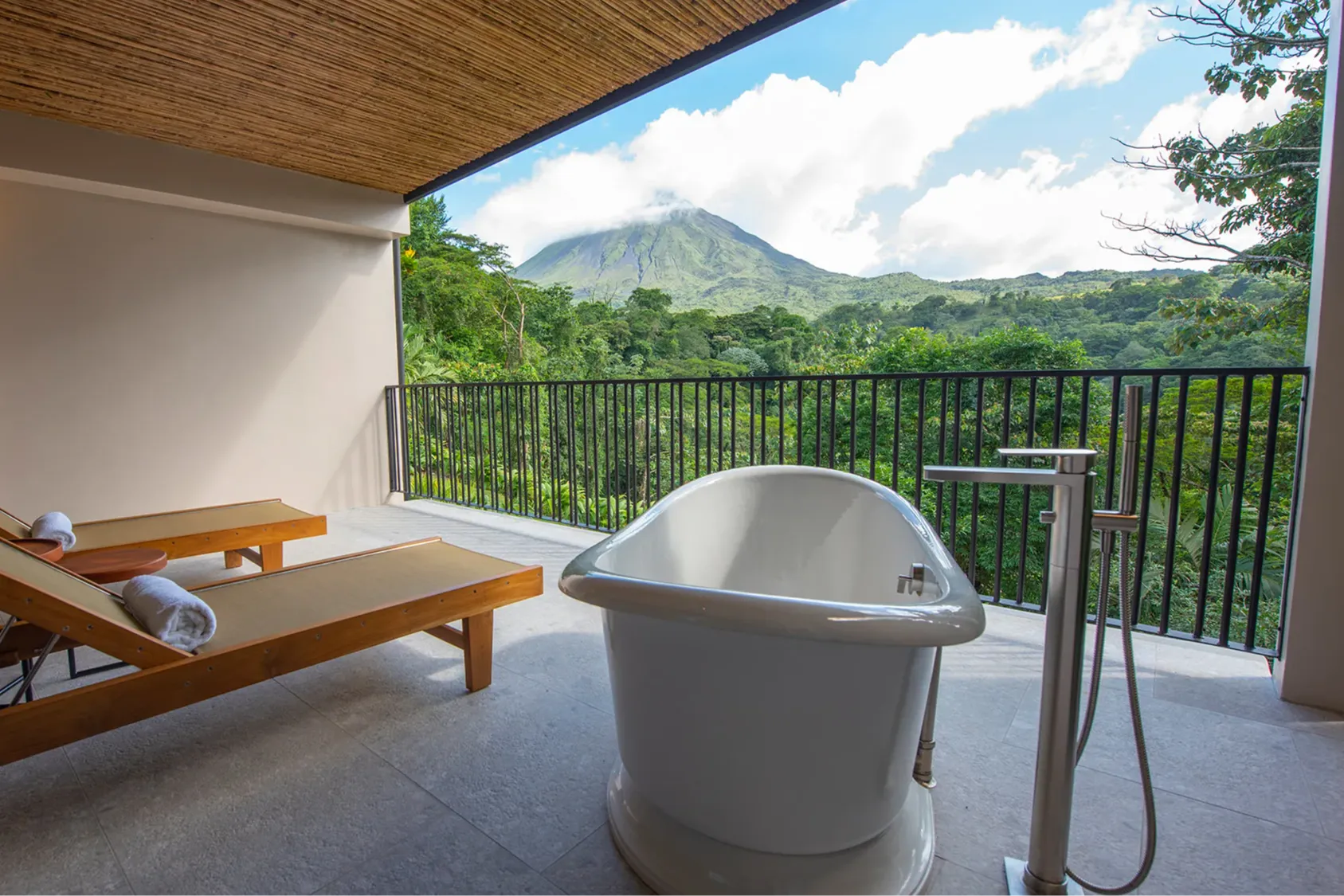
Image courtesy of Tabacon Thermal Resort and Spa
While exploring La Fortuna and Arenal, our advisors loved their time at Tabacon Resort. It’s a spa resort that takes advantage of natural hot springs.
“The best thing to do after a morning of adventures is to spend the afternoon relaxing in the hot springs at Tabacon,” Laura said. “Costa Rica has a tropical climate, so there might always be a chance of rain, but I'll argue that that is the best time to spend time to hang out in the hot springs.”
Fora Advisor Carol Johnston added that even if you’re not staying on the property, you can still get a day pass to enter the hot springs.
Fora Perks at Tabacon Thermal Resort and Spa:
$100 hotel / resort credit, breakfast daily, daily group yoga classes, an upgrade & extended check-in/out whenever possible.
Related guide: The Best Boutique Hotels in Costa Rica’s Arenal and Guanacaste Regions
Days 4–5: Monteverde Cloud Forest Biological Preserve

Monteverde Cloud Forest is a special destination, and reachable from accommodations in or near La Fortuna. Located at a high elevation, the cloud forest is constantly shrouded in mist, creating an ethereal atmosphere that is perfect for nature lovers and adventure seekers. Over 2,500 plant species, 400 bird species — it’s one of the best places in the world for birdwatching — and a vast array of other wildlife, including the elusive quetzal and various monkeys, call the cloud forest home.
“Hiking through the Monteverde Cloud Forest biological preserve with an expert local guide is a must!” Fora Advisor Laura Zapata noted. She added that Costa Rican tour guides go through rigorous training and education to share information about each bird, sloth and any other animal you might see in the preserve. Laura also noted that “they usually carry their own telescope so you can safely observe all kinds of wildlife from far away.”
The forest’s conservation efforts are globally recognized, as the area plays a critical role in preserving rare ecosystems. Explore the forest via canopy tours, hanging bridges and guided hikes, all while learning about the importance of cloud forests in maintaining environmental balance.
Visit a local coffee plantation
The region's high altitude and cool, misty climate create ideal conditions for growing high-quality Arabica coffee. Many coffee farms around Monteverde offer tours where visitors can learn about the coffee-making process, from planting and harvesting to roasting and tasting. These tours often delve into the local history and cultural significance of coffee production in the region, too.
Where our advisors stayed: Nayara Tented Camp

Image courtesy of Nayara Gardens
Nayara Tented Camp, one of our favorite Costa Rica jungle resorts, allows you to stay in rainforest tents with modern furnishings and amenities. If you prefer something more like a traditional hotel for families, there’s also Nayara Springs and Nayara Gardens. All three Nayara properties are surrounded by dense rainforest, and all rank among the best hotels in Costa Rica.
Fora Perks at Nayara Tented Camp & Nayara Gardens:
$100 food & beverage credit, breakfast daily, complimentary air and concierge services, upgrade & extended check-in/out whenever possible.
Fora Perks at Nayara Springs:
$100 food & beverage credit, breakfast daily complimentary air and concierge services & extended check-in/out whenever possible.
Days 6-8: The Papagayo Peninsula & Guanacaste
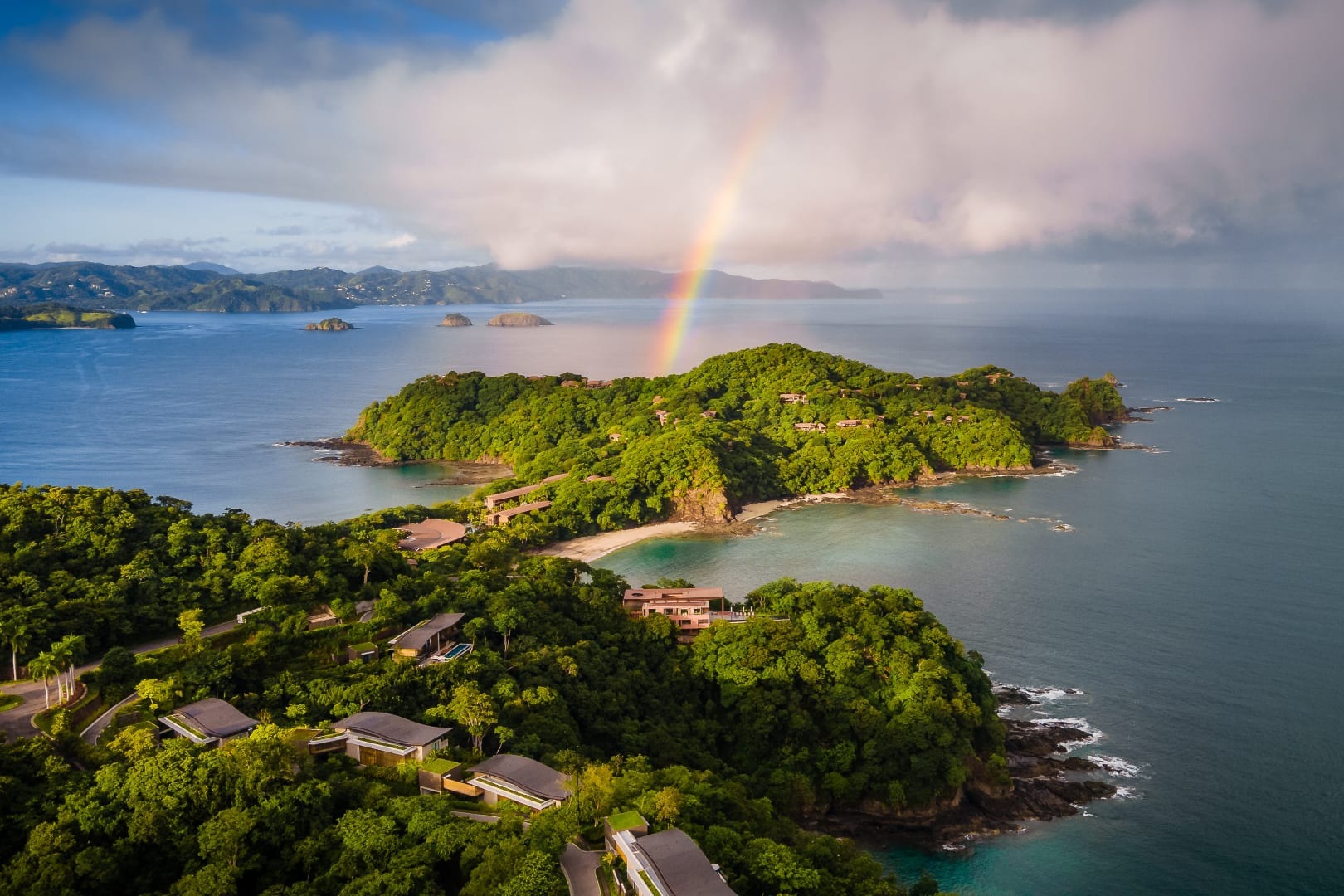
Image courtesy of Four Seasons Resort Costa Rica at Peninsula Papagayo Guanacaste
The Papagayo Peninsula is one of Costa Rica’s most exclusive and stunning destinations, known for its luxury resorts, pristine beaches and natural beauty. Located in the Guanacaste region, the Papagayo Peninsula boasts some of Costa Rica’s most beautiful coastline, with clear waters and soft sandy beaches ripe for sunbathing, swimming, snorkeling and water sports. The beaches are often surrounded by lush tropical forests, offering great opportunities for nature hikes and wildlife observation.
If you’re after a luxurious beach getaway, you may spend all your time in Costa Rica on the Papagayo Peninsula, as it offers a sampling of many of the country’s best things to do. However, our team spent three days in the region before venturing further south.
Related guides: Peninsula Papagayo: A Luxurious Resort Destination in Costa Rica & Unwind in Las Catalinas, Costa Rica
Hike along manicured (or rough) nature trails
Many of the top-tier resorts on the Papagayo Peninsula provide immediate access to a variety of scenic nature trails. Some are well maintained and easily traversed by beginner hikers, while other options are best experienced with a guide.
“In Monteverde, in Arenal, in Tortuguero, in Corcovado — in any place that has a national park or a private reserve, hiking is outstanding,” Meni Mikowski, of Santa Teresa’s Hotel Nantipa, said. “Hiking on your own without a naturalist guide is a waste of time. You'd get the exercise and you see the pretty place, [but] you don't get the educational component, which is very important to the experience.”
Snorkel, paddleboard or cruise off idyllic shores
The Papagayo Peninsula is perfect for leisurely activities like snorkeling and paddleboarding. The waters are generally calm, clean and abundant with colorful fish. Fora Advisor Laura Zapata added that, if you’re lucky, you may even see dolphins close to the shoreline.
Another amazing thing to do in Costa Rica off the Papagayo Peninsula, per Fora Advisor Kimberly Sessions: chartering a private boat. A private charter is fantastic for group trips, and many options include amenities like bottomless drinks and prepared meals. Some trips even include excursions to secluded beaches.
Relax in the natural hot springs & enjoy luxe spa treatments
Laura described Papagayo as the “ultimate spot to relax.” Like Arenal, Guanacaste has a bevy of natural hot springs. Unlike Arenal, there’s a greater variety of luxurious resorts with world-class spas to go along with these springs. Many of these spas offer treatments inspired by the location and Costa Rican culture. These might include massages using oils and organic ingredients sourced from nearby farms.
“While staying at Casa Chameleon, I booked a massage treatment which took place right in my villa — it was fabulous!” Fora Advisor Michelle Cassidy said. “Not only was it the perfect way to relax, but having the treatment in my room made for the most comfortable experience, as I was able to continue to relax at my private pool after my treatment.”
Where our advisors visited: Casa Chameleon, Río Perdido, Four Seasons Resort Costa Rica & Andaz Costa Rica
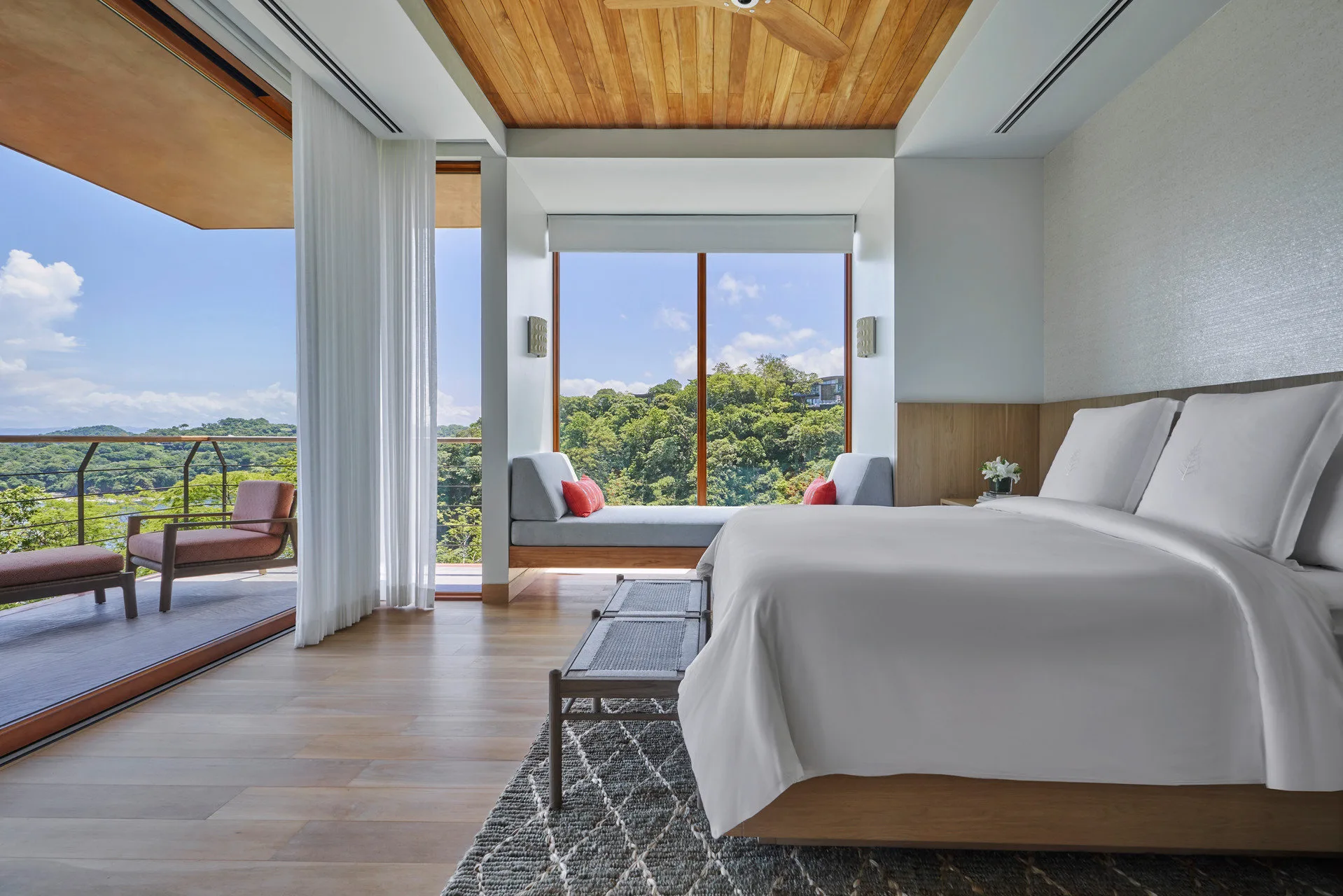
Image courtesy of Four Seasons Resort Costa Rica at Peninsula Papagayo
Fora Advisors on the FAM trip visited many of Papagayo’s luxe resorts. Among the most notable were Casa Chameleon, an intimate resort with only a handful of spacious units and top-tier service (many advisors described the property as one of the best places to stay in Costa Rica for couples). Río Perdido sits on a thermal river and hosts an accompanying spa. Then Four Seasons Resort Costa Rica and Andaz Costa Rica Resort both serve as exemplary getaways with contemporary accommodations in stunning settings.
A Fora Advisor can offer more details on each resort. Simply reach out.
Fora Perks at Casa Chameleon Las Catalinas:
Discounted food / beverage, welcome amenities, upgrade whenever possible.
Fora Perks at Río Perdido:
$50 hotel / resort credit, breakfast daily, upgrade & extended check-in/out whenever possible.
Fora Perks Four Seasons Resort Costa Rica at Peninsula Papagayo:
When you book Four Seasons through Fora, you will enjoy exclusive Four Seasons Preferred Partner benefits. Your advisor will be pleased to give you more details.
Fora Perks at Andaz Costa Rica Resort at Peninsula Papagayo:
$100 food & beverage credit, welcome amenity, breakfast daily, upgrade & extended check-in/out whenever possible.
Days 8-10: The Nicoya & Osa Peninsulas
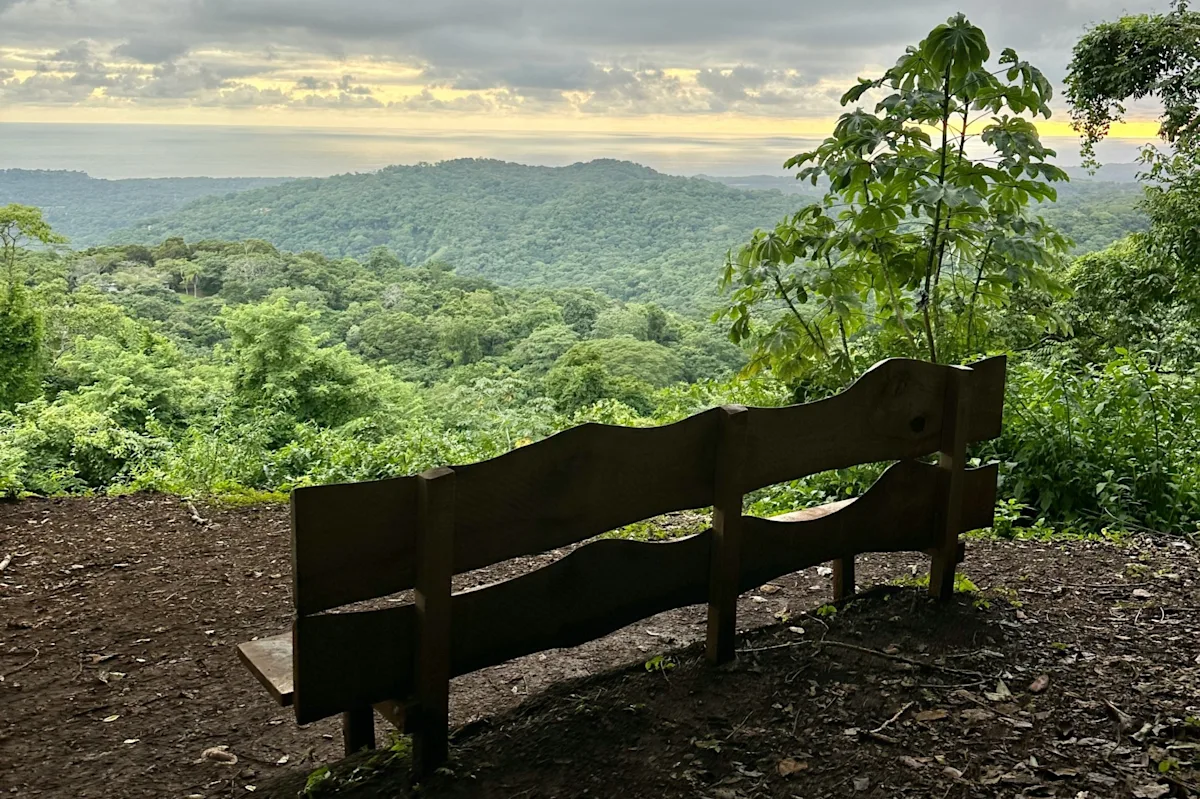
After spending time in Papagayo, our Fora Advisors began traveling south along Costa Rica’s Pacific coast. They first arrived on the Nicoya Peninsula, a sun-soaked region known for its lively beaches, charming coastal towns and “Blue Zone” lifestyle, where locals enjoy some of the world’s longest life expectancies. Towns like Nosara, Santa Teresa and Montezuma offer stunning stretches of sand perfect for surfing, yoga and sunset walks. Nicoya also offers activities like ziplining, horseback riding and snorkeling.
The Osa Peninsula is further south and is a haven for nature enthusiasts and wildlife lovers. Home to Corcovado National Park, the area boasts one of the most biodiverse ecosystems on the planet, where visitors can spot species like jaguars, tapirs and scarlet macaws. Popular things to do in this part of Costa Rica include guided hikes through the rainforest, boat tours for dolphin and whale watching and diving in the nearby Caño Island Biological Reserve.
The two areas have a vibe that’s much more down to earth than Papagayo, and there are so many things to do that you could easily spend your entire trip between the two — especially if you’re looking for an adventurous getaway. That said, the two areas represent a vast stretch of Costa Rica’s coastline and are hours apart. Take advantage of a Fora Advisor’s ability to account for logistics and arrange transportation. It will make a world of difference for your trip.
Related guide: Off-the-Grid in the Osa Peninsula
Visit Tortuga Island by boat (with a chance to spot whales & dolphins)
One of things Fora Advisors on the FAM trip enjoyed most was a boat trip to Tortuga Island.
“During the trip, we spotted over 20 dolphins swimming around the boat and even saw humpback whales,” Fora Advisor Kimberly Sessions said. “The highlight was Monkey Island, where you can enjoy watching a lively troop of monkeys as they swing from the trees and playfully interact. Afterward, our boat docked at Isla Tortuga, where you can swim and snorkel in the warm, inviting waters.”
Kimberly added that you shouldn’t miss the opportunity to try authentic Cocoloco, a refreshing drink made from a coconut filled with local rum.
Tour Corcovado National Park
Remote Corcovado National Park is one of the most biologically diverse places on Earth. Spanning over 160 square miles of untamed rainforest, this park is home to an incredible variety of wildlife, including jaguars and hundreds of bird species. You can explore the park through guided hikes, which range from half-day tours to multi-day treks. Both lead through dense jungle, mangroves and beaches. Corcovado is also a great destination for eco-adventurers, with opportunities for snorkeling, diving and whale watching.
Kayak, take surfing lessons or enjoy other water sports
The Nicoya and Osa peninsulas offer a mix of beaches for all types of water sports, from kayaking and paddleboarding to diving and surfing, especially. In fact, the surfing schools in Santa Teresa are top-notch and excellent for any skill level.
“While Staying at the beautiful Nantipa hotel, I got to take a surfing lesson just minutes from the hotel at Playa Hermosa, which is renowned for its excellent surfing conditions,” Kim said. “Best surfing lesson ever!”
Where our advisors stayed: Hotel Nantipa

Image courtesy of Nantipa - A Tico Beach Experience
Our advisors stayed at Hotel Nantipa on the Nicoya Peninsula. It’s a charming beach resort with a casual atmosphere and gorgeous ocean views. Chat with a Fora Advisor for more options, including a choice of properties that offer more immediate access to the Osa Peninsula.
Fora Perks at Hotel Nantipa - A Tico Beach Experience:
$100 food & beverage credit, breakfast daily, daily group yoga classes, an upgrade & extended check-in/out whenever possible.
Related guide: Site Inspection at Nantipa in Santa Teresa, Costa Rica
Additional (amazing) things to do in Costa Rica
Most of our FAM trip was spent on the country’s west coast or northern interior. But there are so many things to do in Costa Rica. It’s a place you have to visit again and again to really experience everything. Here are a few more ideas to round out your itinerary — or reach out to a Fora travel advisor for personalized recommendations.
Related guides: 7 Fabulous Days in Costa Rica & Perfect 10 Day Honeymoon Itinerary to Costa Rica
Explore national parks like Tortuguero and Manuel Antonio
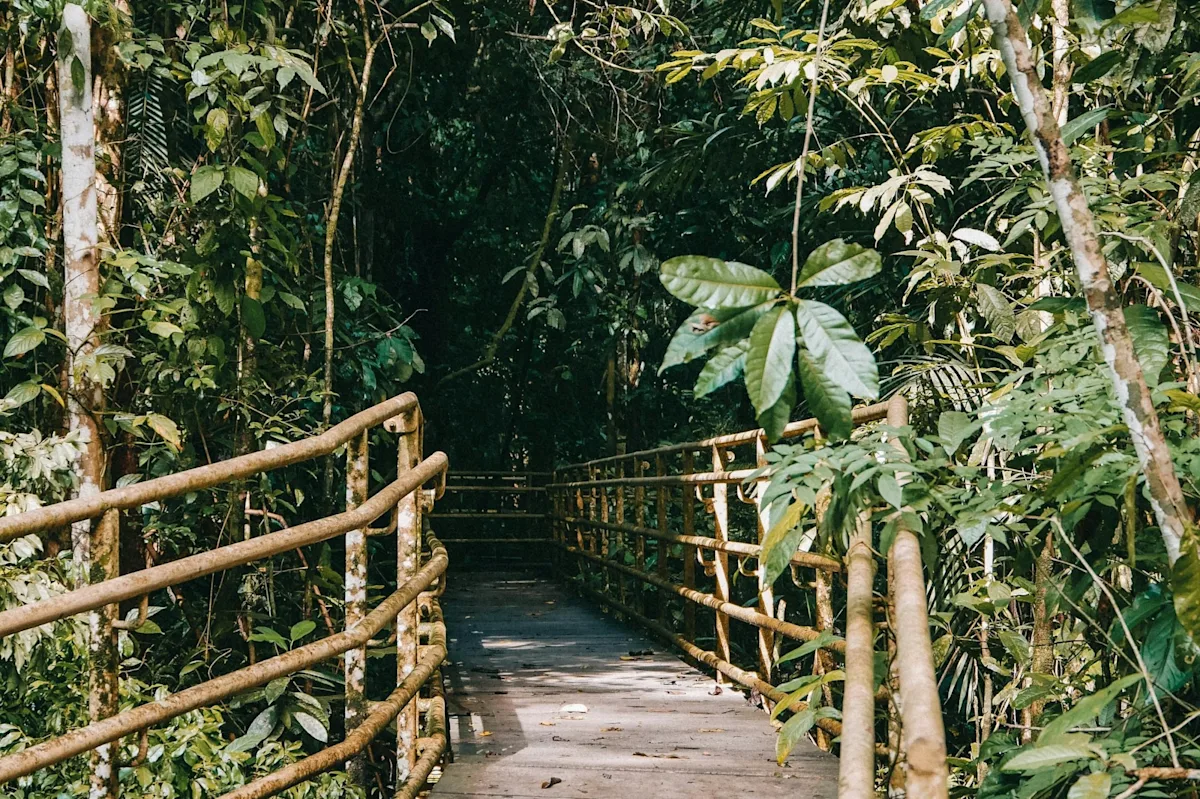
We mentioned Monteverde Cloud Forest and Corcovado National Park, but Costa Rica is home to many other biological reserves worth exploring. Tortuguero, on the country’s Caribbean coast, is one of the country’s best spots to see sea turtles. Manuel Antonio is similar, and hosts a variety of things to do, from snorkeling to hiking and more.
Unwind in hot springs at Ecotermales Fortuna
Ecotermales Fortuna, among many other options throughout Costa Rica, is another hot-spring hotspot. Enjoy rejuvenating mineral baths amid jungle scenery.
Visit Rio Celeste
Rio Celeste is another amazing destination in Costa Rica. The river is renowned for its turquoise water, which is caused by a natural chemical reaction. The river winds through the lush rainforest of Tenorio Volcano National Park, and the path to the river is brimming with exotic wildlife. (Don’t miss trekking to the Rio Celeste Waterfall.) There are also hot springs and guided tours available within the larger park.
Related guide: Wildlife Adventures in Costa Rica: Hiking, Boating & Beaches
Get expert recs when you book your Costa Rica trip with a Fora Advisor
Costa Rica is a paradise full of amazing things to do: ziplining through rainforest, snorkeling in crystal-clear waters, ATV tours, soaking in hot springs... To get the most out of your trip, book with a Fora Advisor. They’ll handle all the logistics, from arranging tours to finding your perfect accommodations.
Things to do in Costa Rica: FAQs
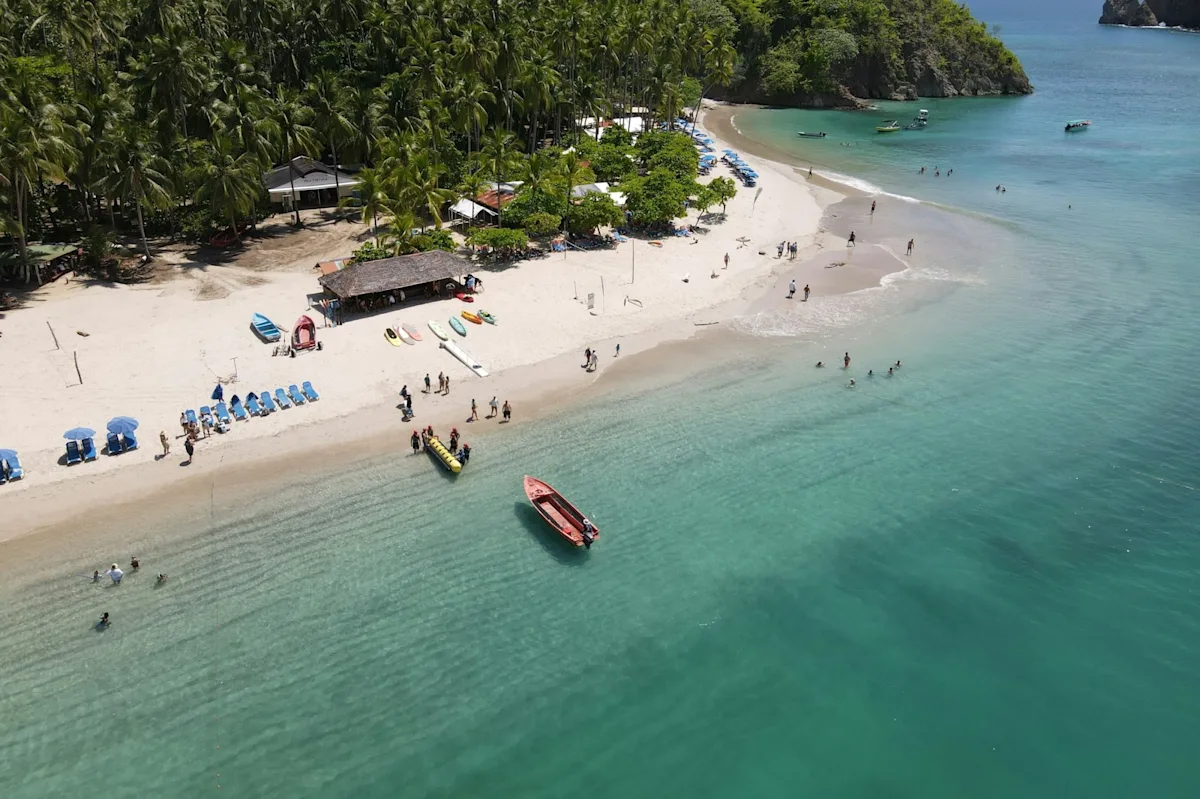
Read on for answers to common questions about Costa Rica travel. (Or ask a Fora Advisor for a tailored report.)
What’s the best place to go in Costa Costa Rica for first-timers?
Most travelers visit a destination in the Guanacaste province — Tamarindo, the Papagayo Peninsula, Nicoya — but there are many great options. Our article on the best places to visit in Costa Rica for first-timers covers this in detail.
How many days should you spend in Costa Rica?
You can cover a lot of ground in 10 days. If you wanted to see all of Costa Rica’s highlights, you would need to spend a few weeks or longer.
Costa Rica is “the type of country you need to come back to and continue exploring,” Meni Mikowski, of Santa Teresa’s Hotel Nantipa, said, “because you are not going to see or experience the whole country in one trip.”
Which part of Costa Rica is best for a variety of things to do?
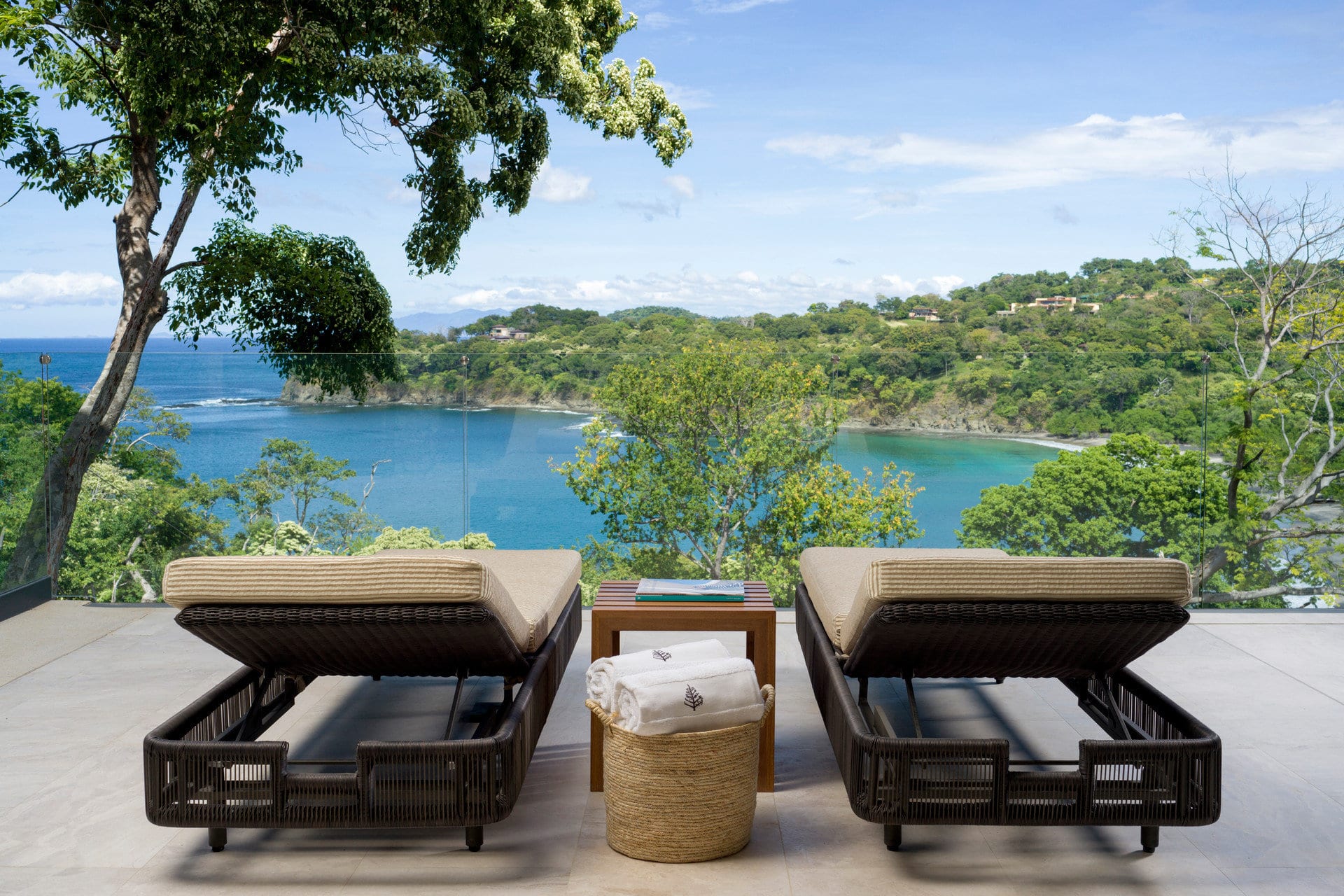
Image courtesy of Four Seasons Resort Costa Rica at Peninsula Papagayo Guanacaste
The coasts tend to offer a little more variety, but you can’t go wrong with anywhere you visit in Costa Rica. Generally, Costa Rica resorts along the Caribbean coast have a bohemian, even casual vibe, along with plenty of beautiful nature parks to explore. The country’s interior offers dense jungles, spa resorts and amazing locales like Arenal Volcano and Monteverde Cloud Forest. And the Pacific coast hosts some of the country’s most luxurious retreats, along with places like Manuel Antonio (another amazing nature destination). It’s worth noting that this is a bit of an oversimplification, and a Fora Advisor can help you sort through all your options.
“There are a lot of travelers that decide to go one week to the beach — maybe a luxury resort — but you're missing an opportunity to see and enjoy most of the country,” Meni said. “So when you're planning a trip, and this is where the travel advisor comes in, you've got to set up two or three different regions.”
Related guide: Tortuguero & the Caribbean Coast in Costa Rica
Is Costa Rica safe to visit?
Absolutely. Although you should exercise caution when vacationing in Costa Rica, as with any new place.
“It's not perfect, but in the world of imperfection, Costa Rica is as stable as it gets,” Gabriel Saragovia, the founder of Río Perdido, said.
“Everybody's very welcoming to new people coming in,” Poett Ryan, Río Perdido’s Commercial Director, said. “Everybody wants to teach you something, to feel comfortable.”
When’s the best time to visit Costa Rica?
There’s no right answer. Costa Rica has several distinct regions that experience different conditions and travel seasons. Our article on the best time to go to Costa Rica offers more insights — or you can always ask a Fora Advisor for a tailored report.
Are there family-friendly things to do in Costa Rica?
Costa Rica is an excellent destination for family vacations. Between the biodiversity, opportunities for adventure and relaxation and stunning scenery, there’s plenty for every type of traveler.
Related guides: Family-Friendly 6-Day Costa Rica Itinerary
What’s something you can’t miss in Costa Rica?
Costa Rica is a top ecotourism destination, and few (if any) places around the world rival the country’s opportunities to safely witness wildlife up close.
“Per area, there is no other place in the world, I believe, that has the same level of biodiversity,” Gabriel said.
What’s the best way to get around Costa Rica?

Image courtesy of Tabacon Thermal Resort and Spa
Generally, renting a car offers the most flexibility, especially for exploring off-the-beaten-path locations. (And this is where an advisor comes in.) However, you may need to rent a 4x4 (and perhaps off-road experience) to visit some areas. For a stress-free experience, private transfers are the way to go, and can be facilitated by a Fora Advisor. If you need to cover large distances quickly, domestic flights can make sense, too, making travel between destinations like San José and Guanacaste faster. There are also bus routes and other public options, but routes may be indirect and chew up valuable time in the country.
Mora Central America & Caribbean travel inspiration
Check out more Costa Rica, Mexico and Caribbean travel articles:
